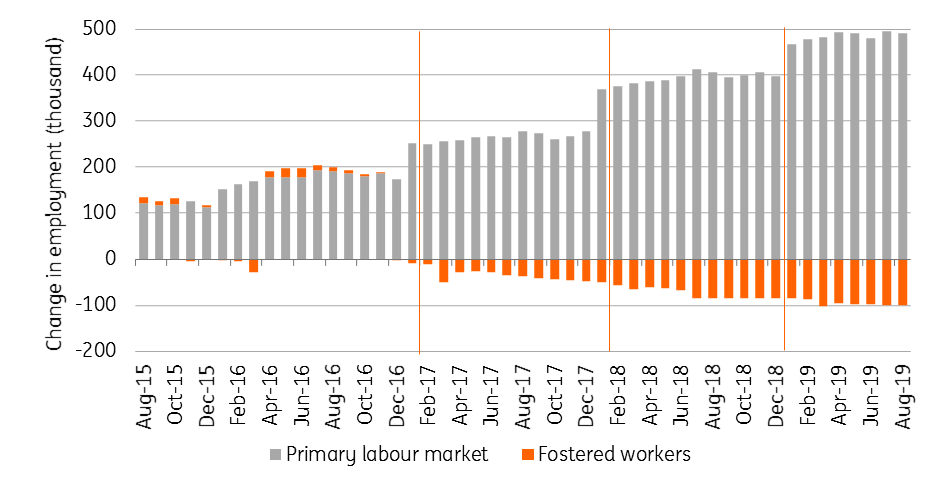Unstoppable Hungarian wage growth continues its ascent
Wage growth remained in the double-digit territory with robust public sector data. We see this trend staying with us for the remainder of the year as we don’t expect any spill-over from the real economy in the short-run
| 11.5% |
Average gross wages (YoY)Consensus 11.2% / Previous 10.7% |
| Higher than expected | |
The Hungarian average gross and net wage growth accelerated in August by 11.5% year-on-year.
The strengthening wage pressure is mainly due to the public sector, where the pace of growth picked up remarkably. After a 7.1% reading in July, August wage growth came in at 11.7% YoY - the second-highest this year. The main driver behind it is the low base of last year, as there was a huge drop in premiums and one-month bonuses in the public sector a year ago.
However, business sector data caused no surprise as the 11.4% YoY salary increase fits in with the trend for 2019.
Wage dynamics (3-month moving average, % YoY)

Wages in the manufacturing, construction and agriculture sector saw above-average growth. In the services sector, wholesale and retail, accommodation and food services and professional and scientific activities are the three main areas driving wages higher.
Labour market trends
There is three level shift in the time series (Jan-17, Jan-18 and Jan-19) due to methodological and data source changes

When it comes to employment, according to institutional statistics it rose by 0.3% compared to January. However, on the primary labour market the dynamics were 0.8%, meaning that the number of fostered workers dropped further (now at 97.9k, 13% lower compared to the start of the year).
Tight labour market and thus strong double-digit wage growth is likely to stay with us for the remainder of the year as we don’t expect any spill-over from the real economy in the short-run.
On the other hand, as companies start to cut back employment expectations, that might impact wage prospects going into 2020. We also expect the government to increase minimum wages and carry out wage settlements in the public sector next year, providing a high floor for wage dynamics.
This publication has been prepared by ING solely for information purposes irrespective of a particular user's means, financial situation or investment objectives. The information does not constitute investment recommendation, and nor is it investment, legal or tax advice or an offer or solicitation to purchase or sell any financial instrument. Read more
Download
Download snap